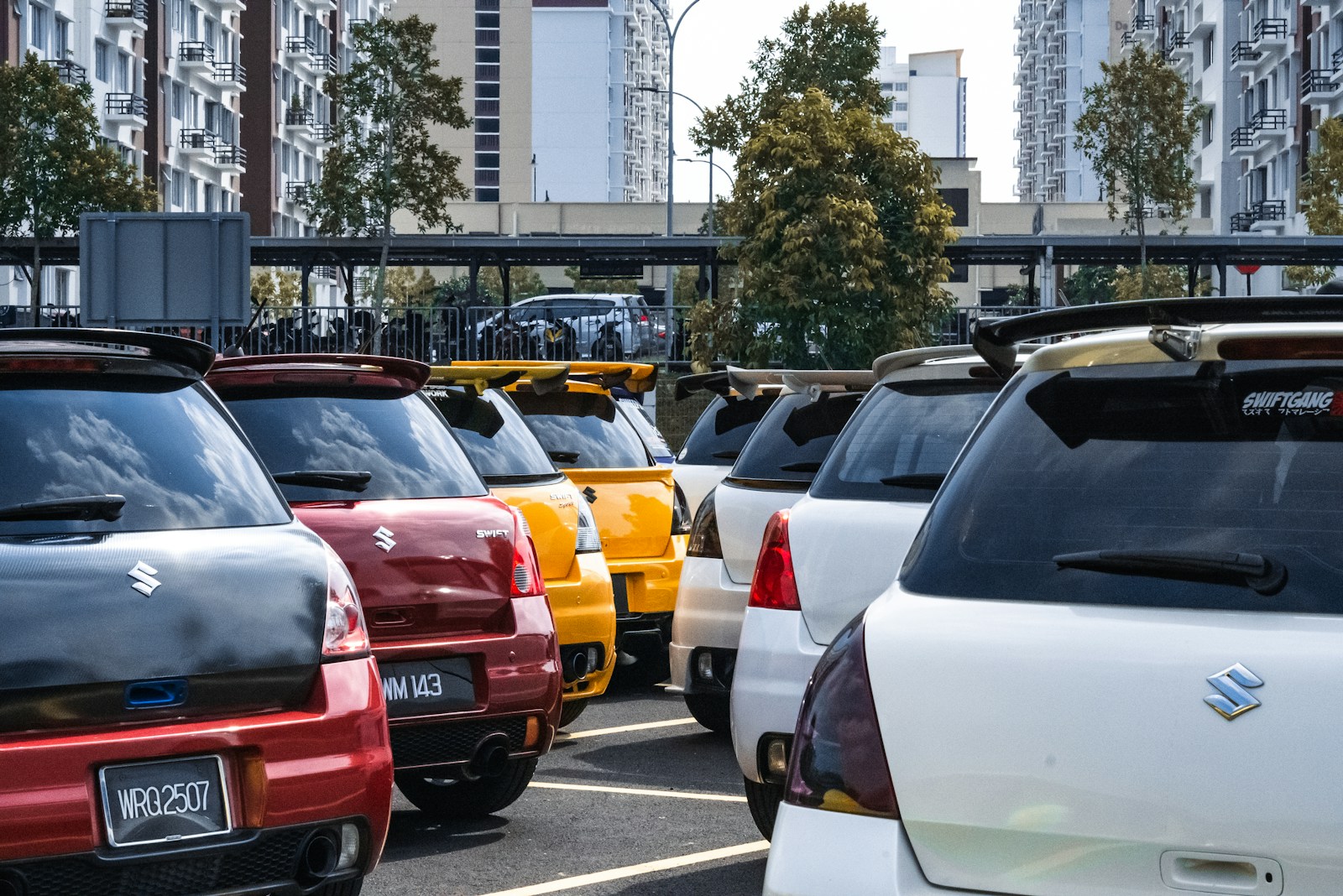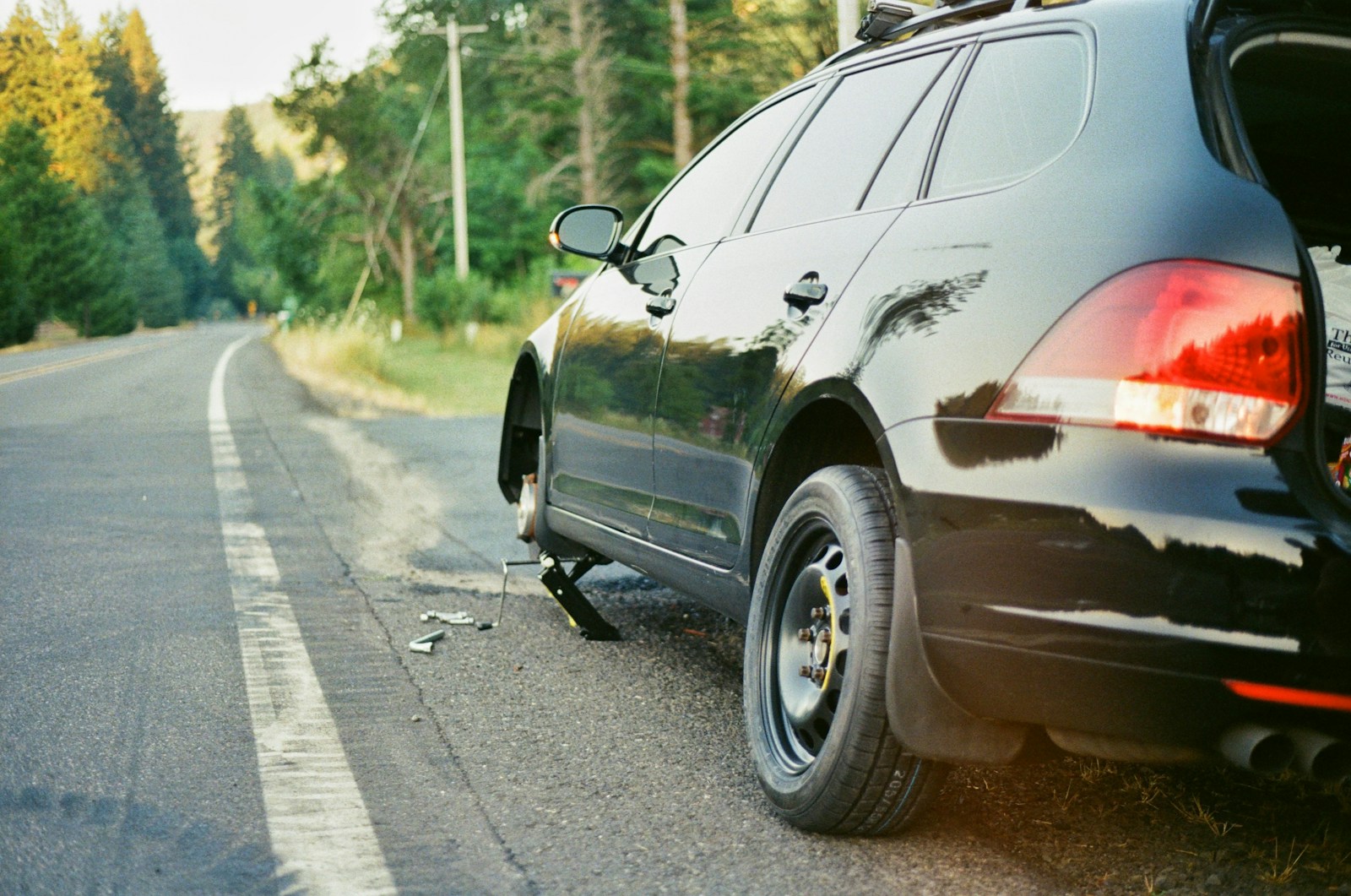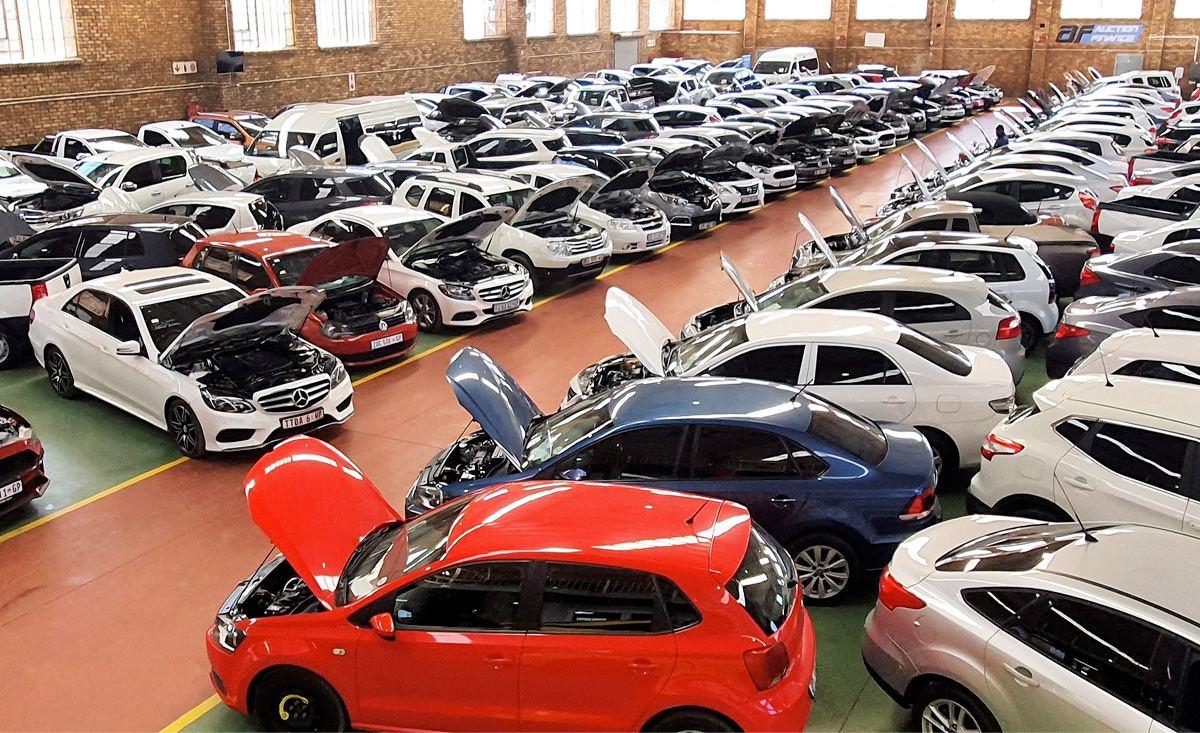According to a 2025 report by Edmunds, the average sale price of a 3-year-old used car in America has surpassed the $30,000 mark. This signals that the used car market in the U.S. is at its all-time high and that the demand for used cars is stronger than ever. The same report also suggests a $17,000 disparity between buying new and used, which is also the narrowest difference between used and new car prices since 2022.
When you also factor in dealership margins, added fees, and limited inventories, buying through an auction becomes a viable alternative. Auctions give buyers a huge selection of vehicles, including fleet cars, lease returns, repossessions, and rare models. All of these can often be had for wholesale-friendly prices as opposed to the retail overhead, which is almost always tied to buying from a dealer. With that in mind, let’s take a closer look at how you can go from browsing to actually winning at auctions.
Why Are Used Car Prices Spiking in 2025?

There are a few notable reasons that drive used car prices in 2025, but these are the ones to pay attention to:
- High Demand
- Low Inventory
- Higher Borrowing Costs
- Supply Chain Issues
- Tariffs
How Does High Demand Affect the Used Car Market?
Markets for all types of goods and services are often shaped by the forces of supply and demand, and the used car market is no different. If more buyers are competing for a limited number of used vehicles available, the prices are going to reflect that. Since the used car market is holding steady, the prices are far from dropping. Current estimates place the U.S. used car market on a steady growing trajectory and are set to rise by USD 885.3 billion from 2024 to 2029.

A higher demand for used cars also affects how quickly the most desirable examples stay on the market and thus lowers the availability even further. Conversely, a lower demand would lower the prices, but as the market fluctuates upward, there are no signs of slowing down.
How Does Low Inventory Affect the Used Car Market?
Simply put, the fewer cars there are on the market, the higher the price for one is going to be. Given the COVID era resulted in a sharp decline in new car sales, those 4-5 year old cars are now reaching the used car market. Since fewer were bought as new, fewer will be available as used. This will also motivate dealerships to compete more aggressively on a limited number of cars and thus will result in higher wholesale prices.

Since many of these costs occur before a car reaches the used car market, most dealers are willing to pass those expenses to the buyer. Uncertainty within the market also motivates dealerships to stockpile fewer cars at the same time to prop up liquidity, but the downside of such a move is a steeper used car price.
Also Read: Buying a Car in 2025: Your Complete Guide to Not Getting Mugged
How Do Higher Borrowing Costs Affect the Used Car Market?
Speaking to Bankrate, Sarah Foster, a senior U.S. economy reporter at Bankrate, said, “Higher borrowing costs don’t just disincentivize spending but also squeeze people out of being able to afford big-ticket items. Less spending, in turn, causes the economy to slow.” This paints a perfect picture of how the used car market reacts once the costs of borrowing go up.

With the added fears of looming inflation and further tariffs, there is less incentive to let go of larger sums of money, both by lenders and buyers. For dealers, this means fewer cars are going out the door and not as frequently, which can cause disruptions to wholesale channels as well. Steeper financing costs can also drive cash buyers, who may have more leverage to negotiate in a high-interest environment where borrowing is difficult.
How Do Tariffs Affect the Used Car Market?
Even though tariffs affect the new car market predominantly, the effect of tariffs spills down to the entire car market. Spikes such as these increase the baseline costs of repair, maintenance, and reconditioning of used cars. Tariffs can also affect the number of available imported cars, which further drives the costs up.

Imposed tariffs also increase the turnaround times since parts are more expensive to source, and many supply chains are stretched because of that. Some dealerships may also shift their focus to selling new domestic brands and thus will not be as eager to list imported used cars. Lastly, millions of new cars will never reach the used car market since they won’t get imported at all, and that will, in turn, push the used car prices even further.
How Do Supply Chain Issues Affect the Used Car Market?
In recent years, we’ve been hearing about looming supply chain issues within pretty much every industry. As expected, these issues affect the new car market primarily, but tend to spill down to the used car market as well. Since these issues were at their worst during COVID, automakers weren’t able to produce as many vehicles, and these vehicles present a large chunk of the used car market.

These supply chain issues have also affected the availability of spare parts and pushed the turnaround times of refurbishing used cars before they rejoin the circulation. In the worst instances, specific models can be hit with these shortages more and thus become virtually unavailable on the used car market.
How Does the 2025 Used Car Market Affect Car Auctions?
After familiarizing ourselves with the ins and outs of relevant conditions within the used car market, we can now explore how these are shaping today’s car auctions. Auction prices are the backbone of the used car market because they help determine the real market value for cars quickly. Since many dealers source their cars through auctions, these will provide the basis upon which a specific margin is going to be added.

With fewer options, higher demand, supply shortages, tariffs, and higher borrowing costs, auction (wholesale) prices are also rising. This is also made apparent by recent estimates, which project the car auction market to grow by up to 4% CAGR (Compound Annual Growth Rate) by 2030. Even though, in 2025, car auctions are becoming more competitive and potentially a bit overly saturated, knowing how auctions work for buyers is a great way to offset some of the costs typically associated with buying a used car through a dealer.
Here is how to do it.
How to Buy Used Cars at Auctions in 2025?
We live in an information-driven world, which means that having the right knowledge can be the difference between getting a good price and paying far too much. Auctions can be a risky venture for the inexperienced but highly profitable for those who know how to approach them, navigate the challenges, and understand the process, and that is exactly what we are going to talk about now.
Breaking Down the Different Car Auction Formats
There are many different types of auctions out there, and they come with their own sets of pros and cons. Some are accessible only to licensed dealers, while others can be accessed by anyone. It’s important to consider these pros and cons when it comes time to decide which one is the best for you.
It’s worth mentioning that this is only a rough outline of what is typically associated with each of these, and that specific platforms and companies can run them differently. With that in mind, here is a quick outline of the most common types of auctions available.
| Auction Type | Who Can Bid | Pros | Cons |
| Dealer-Only Auctions | Licensed Dealers | Lower Prices
Consistent Supply Fewer Competition |
Limited Access
Professional Competition Fewer Protections |
| Public Auctions | Anyone | Accesibility
More Protection Consumer Rights |
More Competition
Available for Dealers Higher Prices |
| Online Auctions | Anyone (Varies) | Convenient
Nationwide Access Transparency |
Difficult Inspection
Added Fees More Competition |
| Specialty Auctions | Anyone (Varies) | Special Cars
Enthusiast Based Fewer Competition |
Niche Buyers
Higher Prices Higher Fees |
How To Win Car Auctions: A Step‑By‑Step Guide
First, it’s worth mentioning that there are no one-size-fits-all solutions when it comes to buying cars. Some people prefer buying cars that are practical, reliable, and efficient, while others base their buying motivations on factors such as performance, enthusiasm, or luxury. We are all different human beings with different needs and wants, but there are still some points all of us should consider when it comes time to buy a car.
- Understand How Auctions Work
- Inspect the Vehicle in Person and Evaluate its Pros and Cons
- Research Market Value and Set a Firm Budget
- Start Slow
- Bid Strategically
Understand How Auctions Work
The first and main point to keep in mind is knowing how a specific auction works to always be aware of all the things you can, can not, and should not do. Different auctions have different formats, and the best way to know is to consider the specific terms and conditions under which a specific auction house operates.
Learn about buyer’s premiums, deposits, reserve prices, fees, payment details, deadlines, and any potential penalties for backing out. By doing so, you won’t be caught off guard and you won’t suffer additional expenses you did not initially foresee. For example, some auction houses will sell cars without a set reserve price while others won’t, so it’s very important to know how these factors play out and how they influence the process.
Inspect the Vehicle in Person and Evaluate its Pros and Cons
A key element of making sure you know what you are buying is to go ahead and inspect the vehicle/vehicles you are interested in buying before the auction starts. Most auctions out there allow for bidders to come in person and check the car out. If you are not able to do so yourself, you could send someone you trust. Either way, if able to, always check the car in person, and if the images and videos available from the auction house seem too good to be true, it’s usually because they are.

When inspecting the vehicle, it would be a good idea to always have a checklist of what to look for and how to evaluate the state of the vehicle.
Here is what to keep in mind:
- Documents, VIN, and Records – It’s critical to make sure that the title is clear (no liens, salvage, or flood branding) and matches the VIN on the vehicle. Check the VIN on the engine bay, the dash, and the doors to ensure they match. Inspect the import/export documentation if applicable and available as listed. Using services such as CarFax and CarVertical can also give you detailed history reports about many aspects of the vehicle.
- Service History and Mileage – Consistent maintenance record with no weird gaps is a must. Be sure to compare odometer readings with logs and physical wear to detect possible tampering or inconsistencies.
- Overall Condition Inside and Out – Check for rust, dents, mismatched paint, overspray, or uneven panel gaps that may indicate tampering. In the interior, look for tears, dashboard defects, moisture stains, or suspicious odors that could prove leaks or even flood damage. Check the wheels and tires, DOT codes, and signs of curb rash.
- Mechanics and the Undercarriage – Check the fluid levels, the color, and listen for strange mechanical noises. Inspect the car for any dashboard warning lights. Take a look underneath the vehicle for oil stains, coolant, or transmission leaks, as well as rust on brake lines or the exhaust system.
- Frame, Suspension, Steering – If you are able to, inspect the underbody and wheel wells for bent structure, inconsistent welds, or signs of structural repairs. Test the suspension by pushing down on each corner of the vehicle and looking for excessive bounce. Lastly, check steering for looseness, noise, or clunkiness.
- Optional Equipment and Features – Test all electronics, the infotainment system, lights, A/C, windows, and seat adjustments. Always be sure to inspect any special features to ensure they are functioning as advertised.
Remember, your goal is to assess the vehicle in great detail to see whether it matches the listing. Many auction houses are overly optimistic with vehicle descriptions, so be vigilant and do your due diligence before bidding!
Evaluate the Pros and Cons
Once you have finished inspecting the vehicle, make sure to put all of the pros and cons on paper and keep it all documented. This will now serve you as a point of reference when it comes time to evaluate the market and figure out what would be a fair price point.
Research Market Value and Set a Firm Budget
In order to research the market of a specific car, it’s always best to start with available online car marketplaces such as eBay Motors, Autotrader, Cars, Bring a Trailer, or Kelley Blue Book.
Be sure to use advanced filters to filter in the exact car you are looking at and make an assessment as to how the asking prices operate. Make a list of what is considered a lowball and what is too much, and do your best to place the auctioned vehicle somewhere within that range. Remember that mileage, condition, service history, trim level, optional equipment, tires, colors, and desirable packages raise the value and make the car more desirable.
Once all of that is done, set a firm budget and stick to it. It can often be very easy to get carried away, especially when one forgets additional fees or necessary repairs if you are flipping the car.
Start Slow
Once the actual bidding process begins, make sure you’ve finished the registration process and that you can start bidding without issues. Some auctions last days while others only last a few minutes. If you’ve done your homework and you know how a specific auction works, this won’t be a problem.
And remember, always start slow, let the others lead the way. There is no need to bid on the car to be the leading bidder, as that can often cause a ripple effect and drastically raise the car’s price. It’s always a good idea to simply spectate a few early lots to get a feel for how the auctioneer and the bidders react and how those can reflect the car’s value.
Bid Strategically
You know your budget, you know the limitations, you know the car, and you know when the auction ends. Use all of that to your advantage, and never jump the gun or act irrationally. It’s best not to show too much interest at first and to wait until the bidding slows down. Do not place consecutive bids on yourself.
Strategic bidding is about winning the right car at the right price, not just winning at all costs, so be sure to keep that in mind. If the bidding goes way over your rationally pre-set limit, walk away and live to bid another day.
Final Thoughts
Knowing how to find undervalued cars at auction is not about being bold; it’s about being prepared and systematic with your approach. Bidding is, in its purest form, a form of value determination, yet psychologically, we humans can make it about ego, competition, and the thrill of winning rather than the actual worth of the car.
It’s also worth mentioning that many cars will be snatched in front of you, and you may even think you just dodged a deal of a lifetime, but practice makes perfect, and with the right approach, you will win.
FAQs
Why are used-car prices rising in 2025?
Used-car prices are increasing due to a combination of factors such as limited new car production, high demand for affordable vehicles, and supply chain disruptions that continue to impact the auto industry.
Is it still possible to find a good deal at car auctions in 2025?
Yes. With the right strategy—such as researching vehicle history, setting a strict budget, and targeting less popular models—you can still secure good deals despite higher market prices.
What types of vehicles are most affected by the 2025 price spike?
SUVs, trucks, and fuel-efficient hybrids are seeing the largest price increases because of strong demand and limited availability.
How can I prepare for a used-car auction in 2025?
Arrive early, inspect vehicles thoroughly, check market values in advance, and avoid emotional bidding to prevent overpaying.
Are online car auctions a better option in 2025?
Online auctions can offer more variety and convenience, but they also require careful research since you can’t physically inspect the vehicle before bidding.






